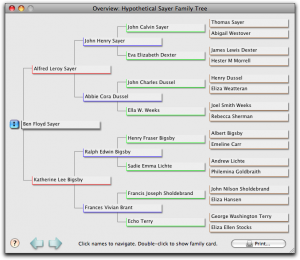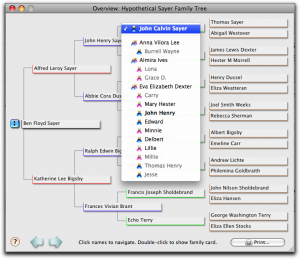Many MacGenealogists noticed my use of “extra” commas in place-names while viewing the Speed Names screencast. A number of viewers were so curious that they asked why I include them. I chose to write the answer as an article so that those who were not bold (or curious) enough to ask could also be informed.
As we know, the commas in a complete place-name separate the individual elements of the name: city, county or province, state or region, and country. As eagle-eyed viewers noted, I include them even when a part of a place-name is unknown or not specified by a source. So if all except the city is known there is an empty, leading comma like this:
, Washtenaw, Michigan, USA
If the all names except the county is known the entry will be:
Ann Arbor, , Michigan, USA
Where only the country is known you’d see:
, , , USA
And so forth.
I find that this practice eliminates some errors, for example mistaking a county name for a city name. Ambiguity in genealogical documentation can cause wasted time and possibly money. And wasted time delays achievement of our research goals—something none of us wants! The extra commas are simply one my methods for preventing errors I would otherwise undoubtedly make.

